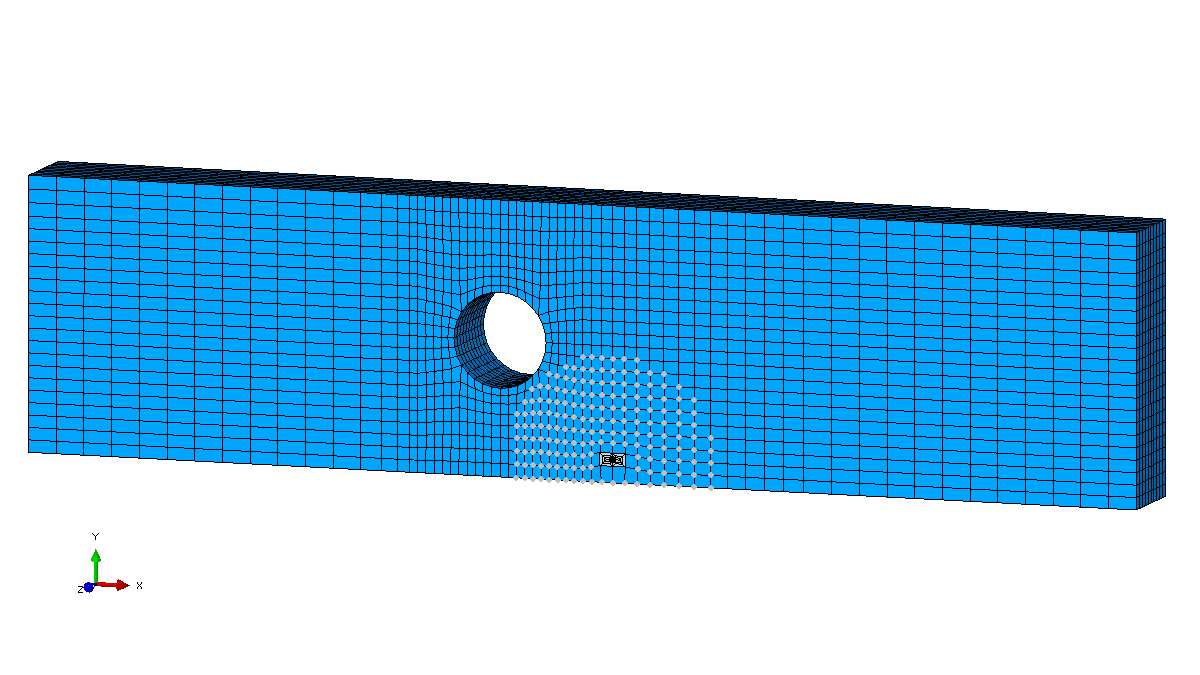- Software
- Zencrack
- Technical
- Meshing Procedure
Crack Growth
Meshing Procedure
Crack Growth
During a crack growth analysis Zencrack carries out a number of steps to re-generate the mesh with an advanced crack position. This advancement of the crack simulates the crack growth in the structure:
- Process the results of a finite element analysis to determine fracture mechanics parameters.
- Integrate these data with the crack growth law and load history to calculate growth at each crack front node.
- Re-distribute nodes along the crack front if necessary to maintain outer surfaces.
The fatigue (or time dependent) crack growth integration is carried out
in a "consistent cycles" (or "consistent time") approach during crack
growth integration - all crack front nodes must grow by the same
number of load cycles (or time) over an integration step. This consistency across all crack front nodes is essential in order that any change in crack shape due to effects such as sub-threshold
zero-growth cycles is properly taken into account on a node-by-node
basis.
This approach means that, in general, each crack front node has a different growth magnitude and direction over an integration step.
Remeshing Method
For the remeshing method the advancement of the crack is simulated by remeshing the original uncracked mesh at each step using the constantly evolving crack front shape and the crack surface generated by the analysis.
- The ring radius at the crack front is re-calculated at each step.
- The extent of the remesh region around the rings and away from the crack surface is re-calculated at each step.
Crack-block Method
For the crack-block method several types of modifications can be made in the mesh at each analysis step:
- Check whether the crack-blocks need to be transferred to the next line of elements
- Apply boundary shifts to the outer regions of the replaced elements (if necessary)
- Apply relaxation to the elements surrounding the replaced elements (if necessary)
- Re-map the internal nodes of the crack-blocks taking account of the current crack front(s) and any non-planar crack history.
For some classes of problem the boundary shifting algorithm is extended to allow crack-block transfer from one element location to another. This enables large scale crack growth through the structure. The example below shows this type of crack-block transfer. The highlighted nodes are identified as the local radius around the crack front in which the mesh is modified by mesh relaxation during the remeshing procedure.

Examples
The sample applications section provides a number of examples that demonstrate the effectiveness of the meshing capabilities within Zencrack during a crack growth analysis. Three examples are highlighted here.
Technical
Meshing Procedure
More in this category